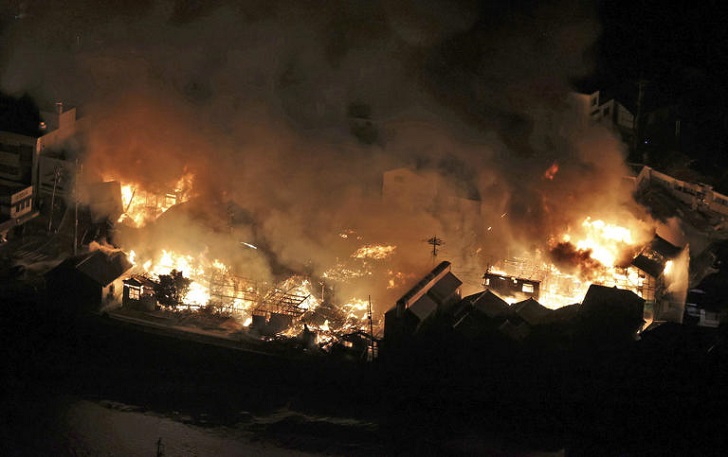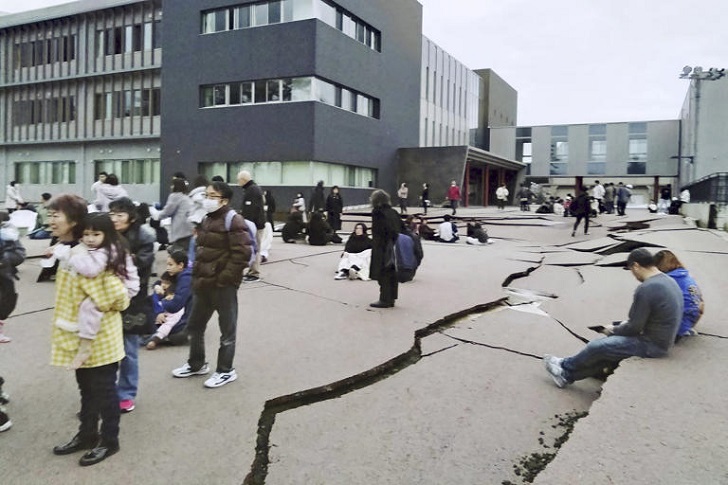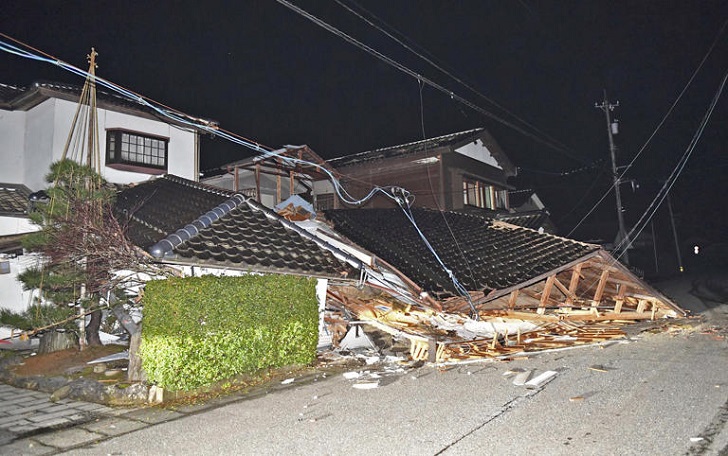In the vibrant and bustling metropolis of Tokyo, a new chapter has been added to the ongoing narrative of Tokyo earthquakes. On a serene Thursday, according to the country's weather agency, northeastern Japan was shaken by an earthquake with a preliminary magnitude of 6.0. This recent tremor has sparked discussions and concerns, but fortunately, no tsunami warning was issued, and no abnormalities were confirmed at the infamous Fukushima Daiichi nuclear power plant.

NBC News | MSN | An aerial photo shows a fire due to a massive earthquake in Japan's northeastern region.
The Tokyo Earthquakes Series Continues
Tokyo earthquakes are no stranger to the headlines, given Japan's location on the Pacific "Ring of Fire," where tectonic plates meet and create a hotbed for seismic activity. The latest M6.0 quake adds to the series of tremors that have historically affected the region, reminding us of the ever-present need for vigilance and preparedness in the face of nature's unpredictability.
The 12:16 p.m. quake was felt strongly in the prefectures of Iwate, Miyagi, and Fukushima, registering 4 on the Japanese seismic intensity scale of 7—a scale designed to measure the effects of an earthquake on the surface rather than its energy release. The epicenter was pinpointed off the coast of Fukushima Prefecture, about 40 kilometers underground, posing a stark reminder of the 2011 quake and tsunami disaster that profoundly impacted the same area.
A Sigh of Relief: No Immediate Threat to Fukushima
In the aftermath of the earthquake, the Nuclear Regulation Authority was quick to confirm that no irregularities were detected at the Fukushima Daiichi plant, wrecked by the 2011 disaster, as well as the Fukushima Daini plant, located about 12 kilometers south. This news came as a sigh of relief for a nation still healing from the scars of past calamities, underscoring the effectiveness of Japan's stringent nuclear safety measures post-2011.
The event also caused temporary disruptions, with bullet trains on the Tohoku Shinkansen Line coming to a halt, reflecting the quake's significant impact on daily life and infrastructure. East Japan Railway Co. promptly addressed the situation, showcasing Japan's efficient emergency response systems that have been refined through years of dealing with natural disasters.
Learning and Living with Tokyo Earthquakes
The recurrence of Tokyo earthquakes serves as a constant reminder of the delicate balance between human resilience and nature's might. Each event, while daunting, provides invaluable data for scientists and emergency planners to analyze, helping to refine prediction models and enhance safety protocols. The collective memory of past disasters fuels innovations in engineering and architecture, leading to the construction of buildings and infrastructure capable of withstanding seismic forces.
Community education and drills play a crucial role in preparing the populace for potential future quakes. From schoolchildren to corporate employees, the ethos of preparedness is ingrained in Japanese society, embodying a shared commitment to safeguard against the unforeseen. This collective resilience is a testament to the spirit of a nation that has learned to coexist with the threat of earthquakes, turning adversity into a catalyst for growth and innovation.
The Road Ahead: Embracing Resilience and Preparedness
As Tokyo and the broader Japanese community navigate the challenges posed by Tokyo earthquakes, the focus remains steadfast on enhancing resilience and preparedness. The lessons learned from each quake, including the latest M6.0 tremor, are integrated into the fabric of national emergency planning and response strategies.
The journey ahead involves continued investment in technology and research to better understand seismic activity, alongside fostering a culture of readiness that empowers individuals and communities to act decisively during critical moments. The spirit of 'kizuna,' or bonds of friendship and solidarity, becomes ever more relevant as Japan faces future uncertainties, united in the resolve to emerge stronger with each challenge.
Conclusion
In the narrative of the Tokyo earthquakes, each event adds a layer of complexity and learning, enriching the collective experience of a nation that stands resilient in the face of natural adversities. The recent M6.0 quake in Japan's northeast is a stark reminder of our shared vulnerability and the unyielding human spirit that rises to meet it, encapsulating the essence of living in harmony with the earth's rhythms.

